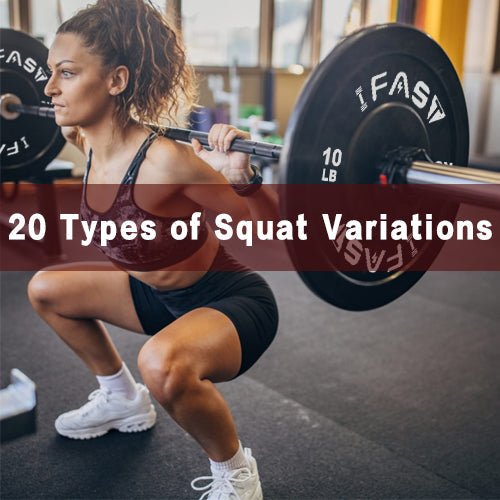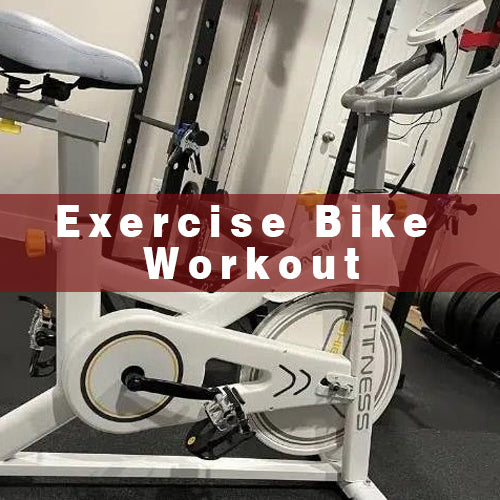A squat rack is a type of strength training equipment that supports barbell exercises with free weights without the limitations of motion imposed by the equipment. The strength training capabilities of free weights are more significant than any strength training machine.
When weightlifting, safety always comes first. Injury prevention is one of the keys to continuous improvement. All squat racks feature safety bars allowing you to lift free weights at home safely.
IFAST shares 5 squat rack exercises you can safely perform on this tried-and-true gym staple that you can tailor to your workout needs.
Barbell Bench Press
Muscles Targeted: Chest

- Lie flat on your back on a weight bench, touch the bench surface with your head, upper back and buttocks and obtain firm support, separate your legs naturally, and place your feet flat on the floor. Grip the barbell with a full overhand grip. Hold hands slightly wider than shoulder-width apart.
- Remove the barbell from the squat rack and straighten your arms so that the barbell is directly above your collarbone. Sink your shoulders and tighten your shoulder blades.
- Lower the bar slowly with complete control, touching the chest lightly just below the nipples. Then push the barbell up and back slightly so that the barbell is back above the collarbone. The elbows, at this point, can be locked or not fully straightened. The shoulder blades continue to tighten.
Barbell Row
Muscles Targeted: latissimus dorsi

- Bend over and stretch your hips, hold the barbell with both hands slightly wider than shoulder width, bend your knees and lean forward slightly, with your torso and the ground at about 70 degrees, so that the latissimus dorsi will move more intensely. Your arms will be straightened and your waist bent.
- Inhale evenly, then lean over and grab the barbell to the lower part of the abdomen (if the barbell is pulled to the lower part of the chest, focus on the upper part of the back muscles, that is, the teres major, rhomboids, trapezius and rear deltoids), exhale, Pull the elbows and shoulders back as far as possible and engage the shoulder blades, contract the lats, inhale and slowly return to the starting position.
Barbell Front Raise
Muscles Targeted: Anterior Deltoid

- Stand naturally, or stand close to a 45-degree incline, hold a barbell or dumbbell with both hands in front of your legs, and the distance between the grips is shoulder-width apart.
- Lift the barbell forward and upward (slightly bend the elbow) until it is higher than the line of sight level. Then, slowly lower back down; repeat.
Barbell Back Squat
Muscles Targeted: Butt muscles, Leg muscles

- Tighten the shoulder and back muscles, let the shoulders sink naturally, and then place the barbell on the shoulders, not the neck! After that, hold the two ends of the barbell with both hands, and at the same time, adjust the posture of the legs so that the feet are separated by about the same distance as the shoulders, the toes are slightly apart, and the direction of the knees and toes are consistent.
- Immediately afterward, lift the bar, and pay attention to regulating your breathing at this time. Then, squat down until your thighs are parallel to the floor. Then, slowly straighten up. In this way, repeat the action repeatedly. Here, it is recommended that beginners use a weight of 20-40 kg, 6 in each group and 10 groups each time. Because the risk factor of this action is relatively high, it is not recommended to use too much weight.
Romanian Deadlift
Muscles Targeted: Hamstrings, Back, Gluteus Maximus

- Pull the barbell out of the squat rack and take a small step back, place the barbell at the height of the midline of the thighs, and hold the barbell with your hands shoulder-width apart. Then straighten your back, stretch your shoulders back, tighten your shoulder blades, tighten your core, slightly bend your knee joints, and don't hyperextend and lock your knee joints.
- The hips move back and forth, the thighs move back, and the barbell moves back and down with the thighs.
- Lower the barbell until the waist bends, stop the barbell, then contract the waist and hip muscles and pull the barbell up against the thigh until the body is upright. Remember not to let the barbell touch the ground.
IFAST Home Gym
🔥Click it 👉Shop


